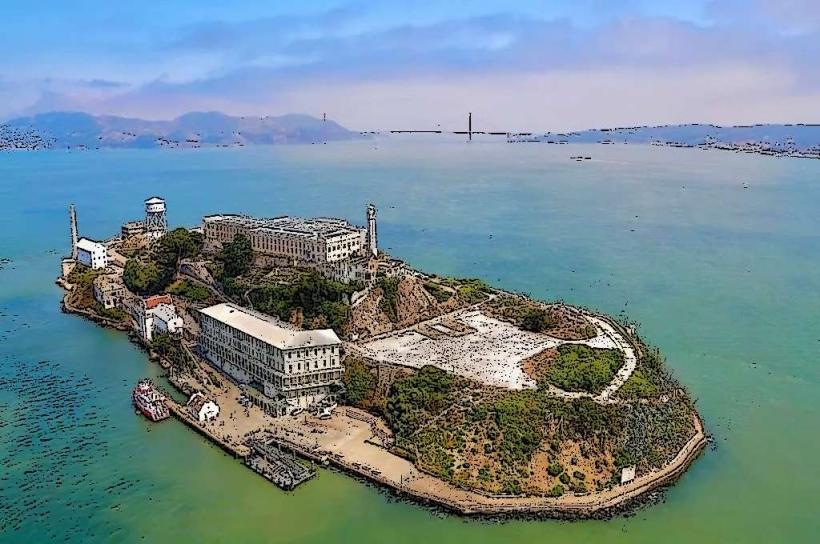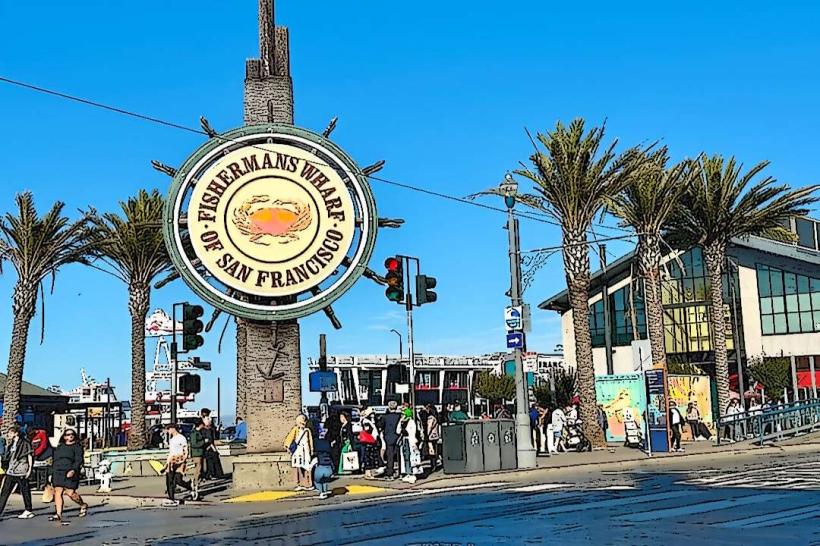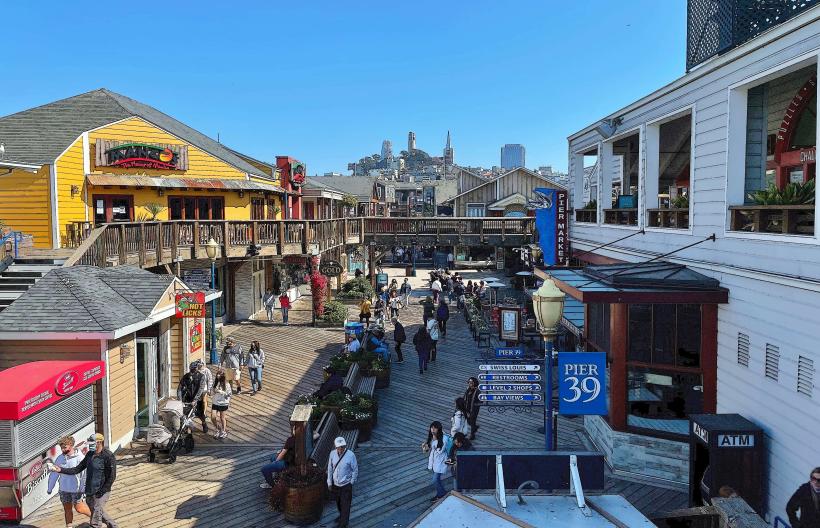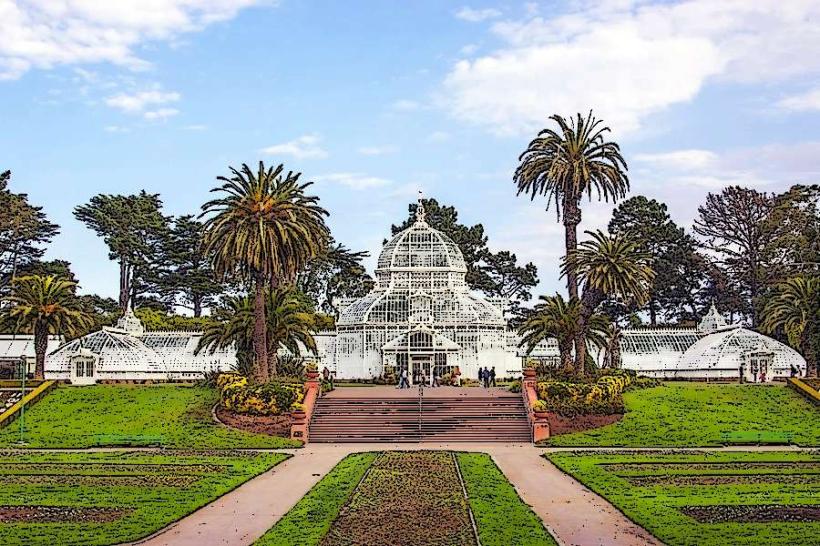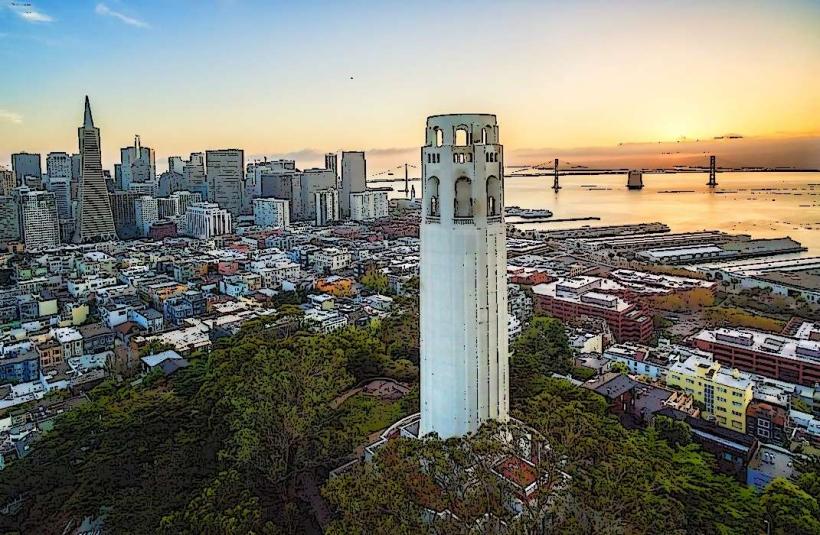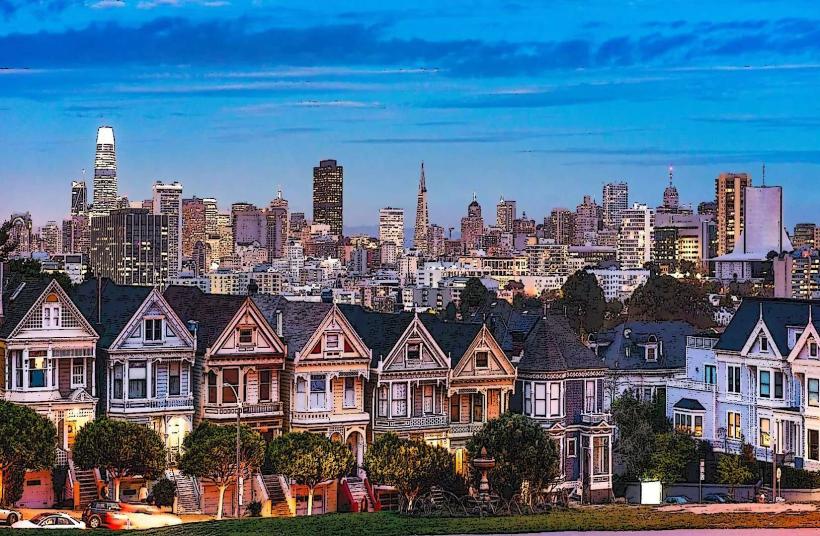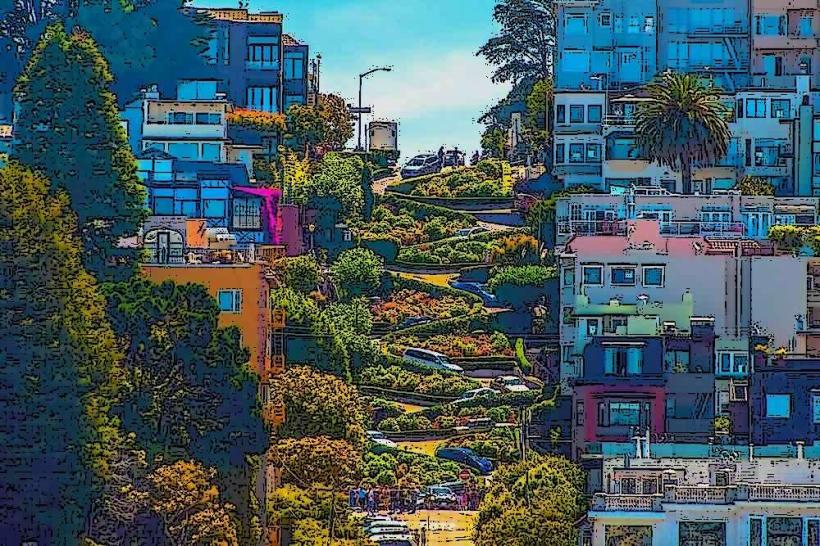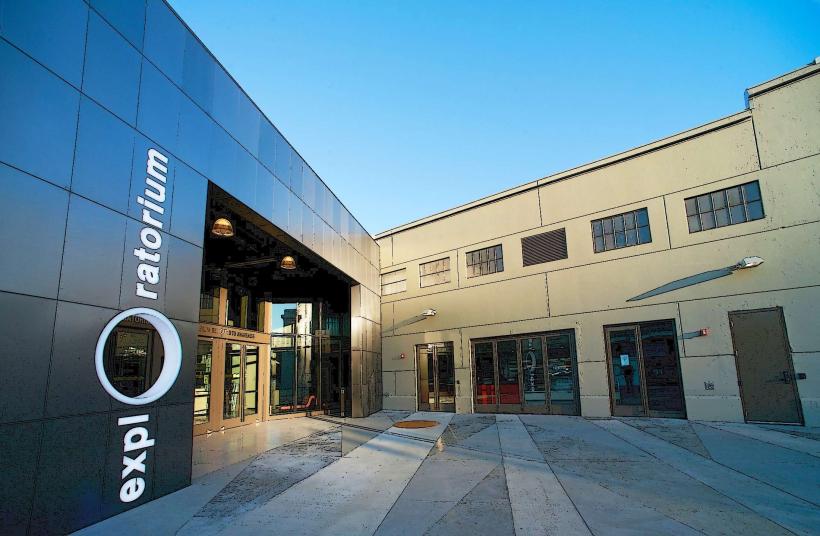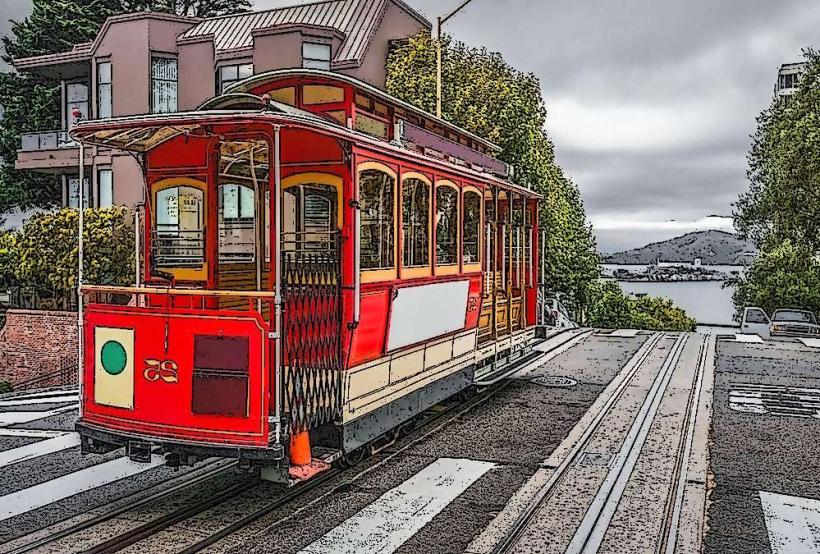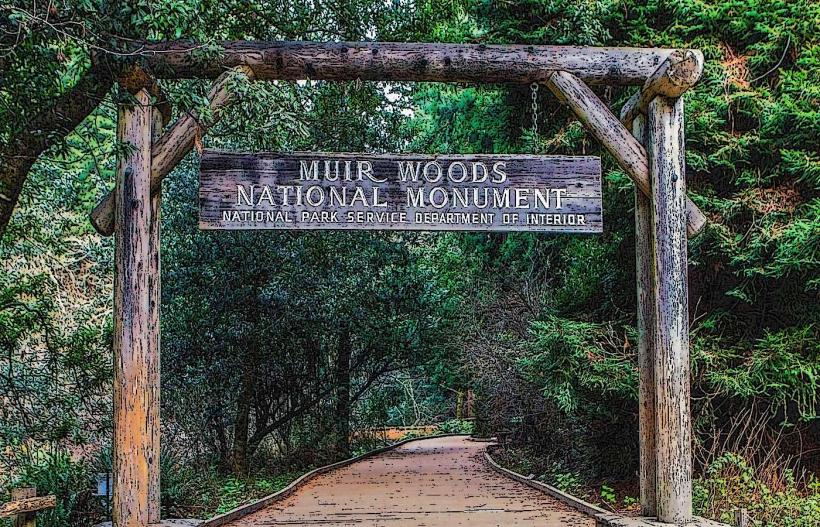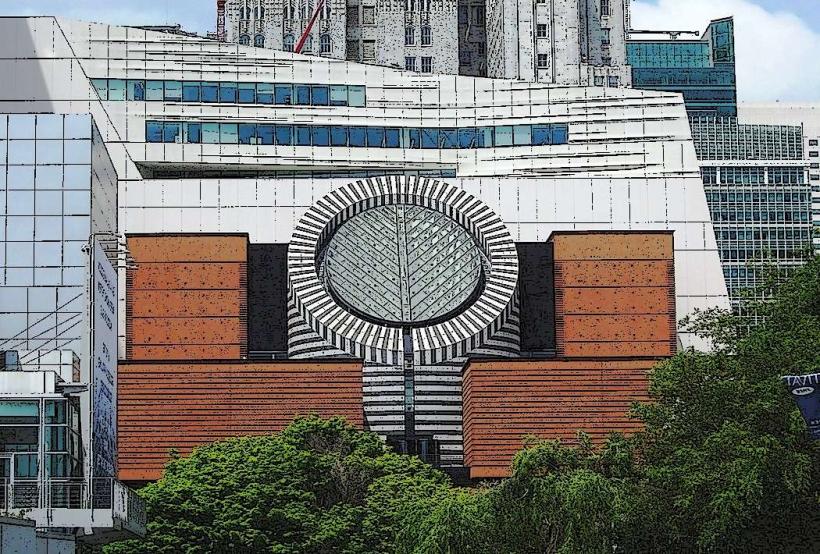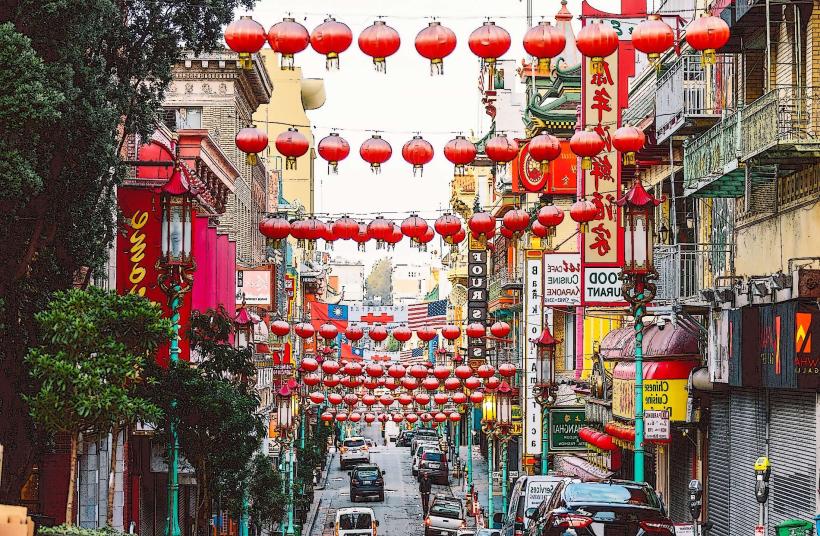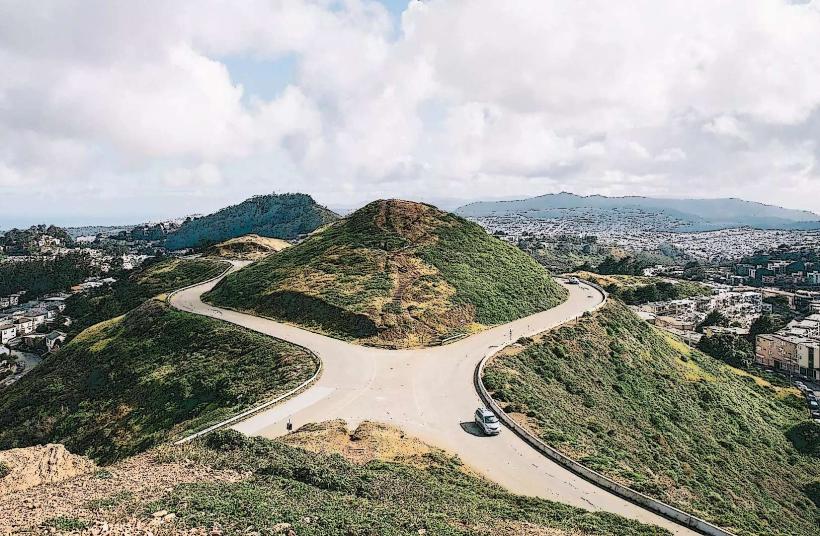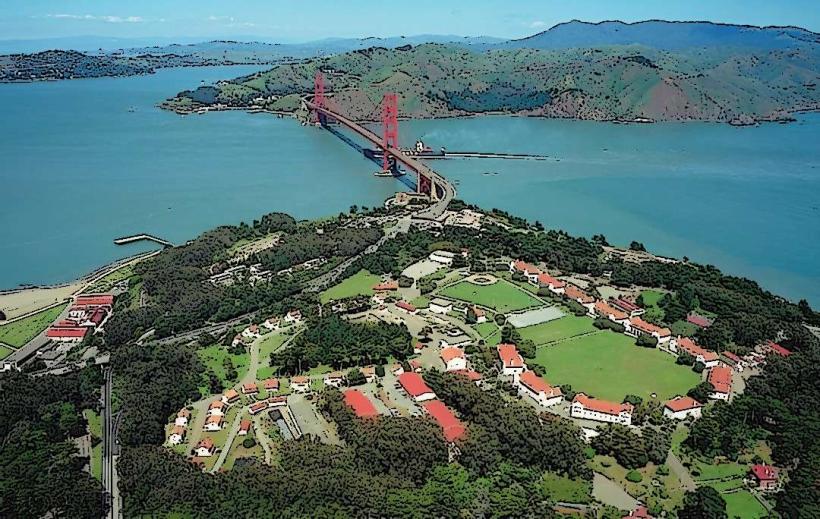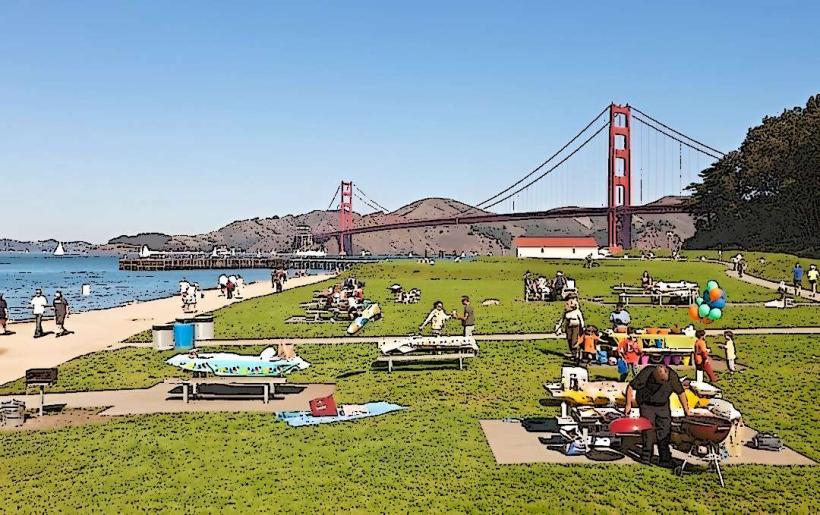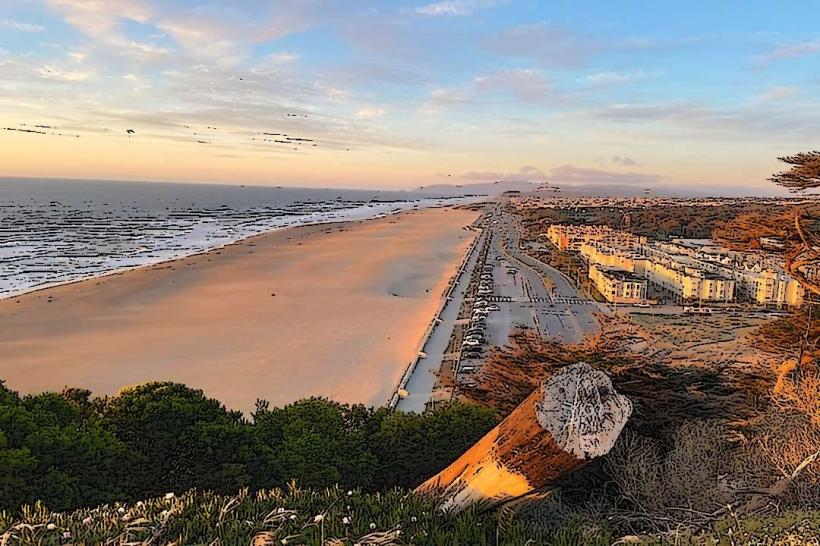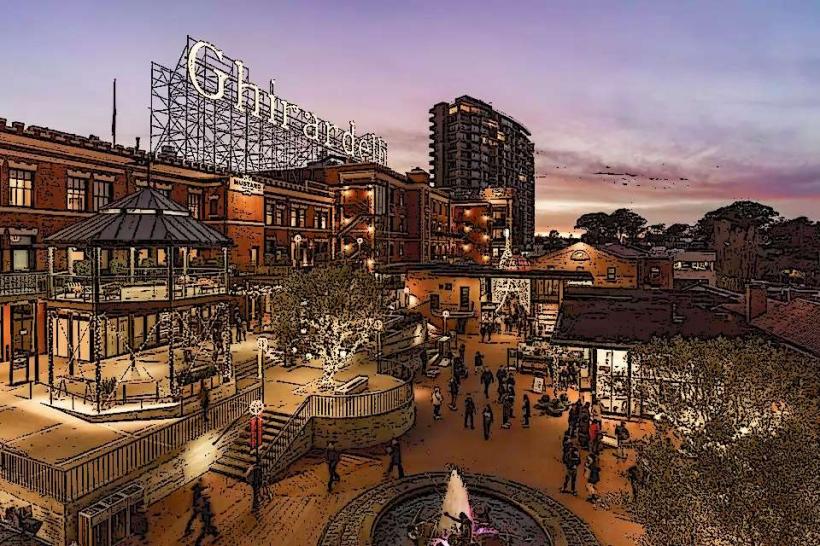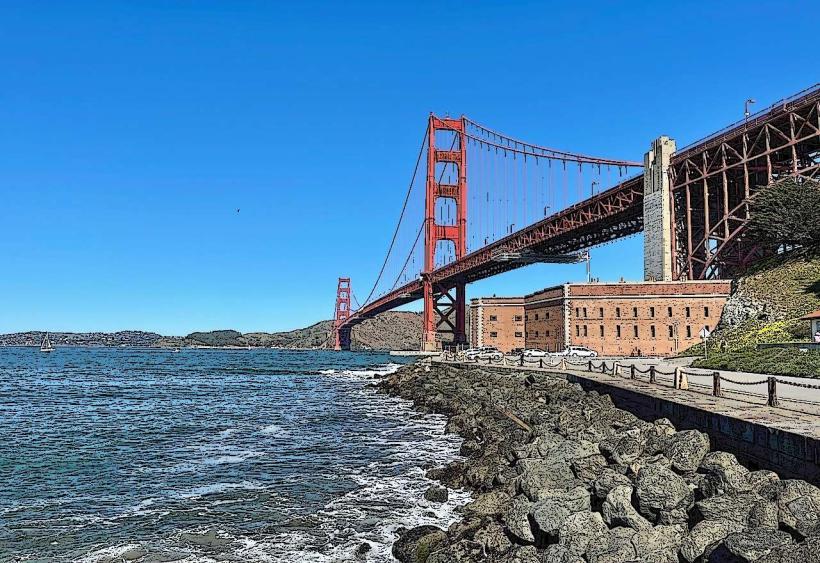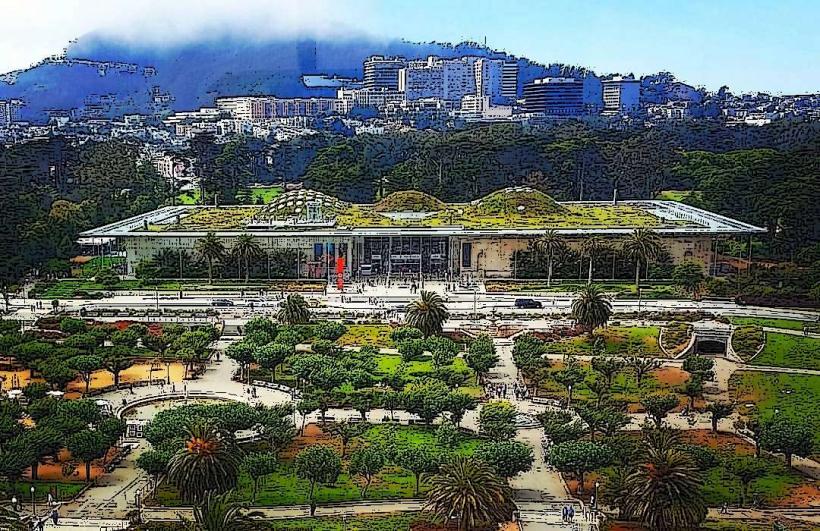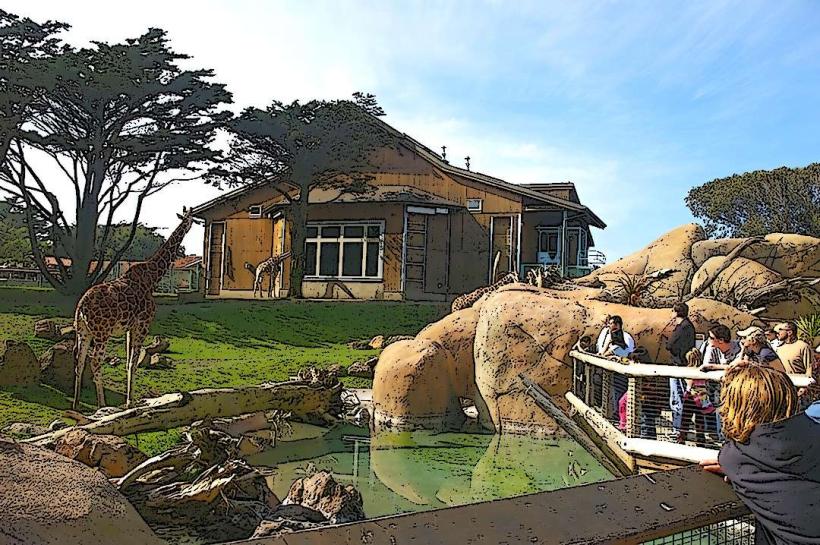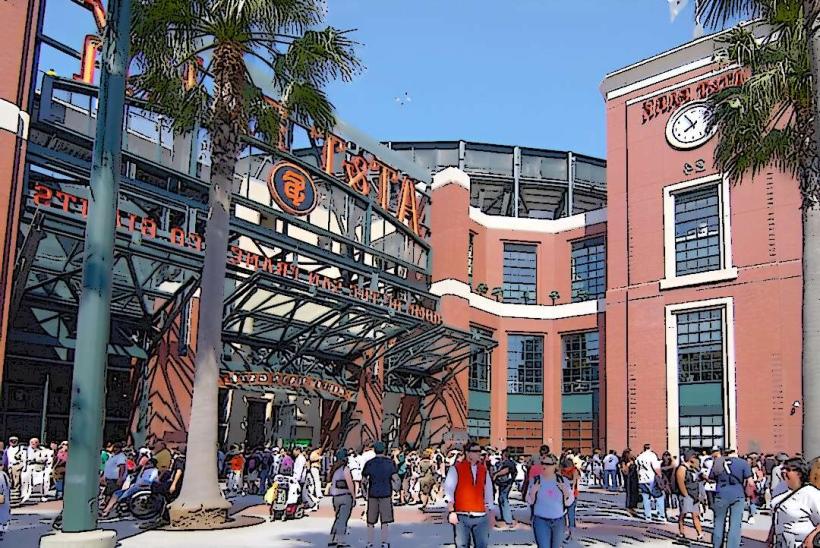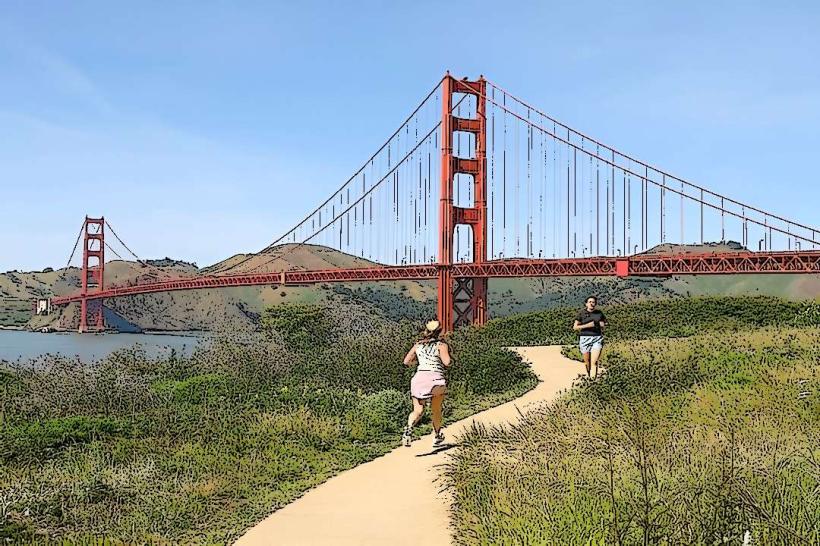Information
Landmark: San Francisco-Oakland Bay BridgeCity: San Francisco
Country: USA California
Continent: North America
San Francisco-Oakland Bay Bridge, San Francisco, USA California, North America
The San Francisco-Oakland Bay Bridge, commonly known as the Bay Bridge, is a critical and iconic structure connecting the cities of San Francisco and Oakland in the San Francisco Bay Area. Spanning the bay, it serves as one of the busiest and most important transportation links in Northern California, providing vital access for commuters, travelers, and freight moving between the East Bay and the San Francisco Peninsula.
History and Development
Early Concepts and Planning: The idea of a bridge spanning the San Francisco Bay dates back to the early 20th century when the need for a reliable transportation route between San Francisco and the East Bay became apparent. At the time, ferry services were the main method of crossing the bay, but they were limited and not efficient enough to accommodate the growing population and increasing vehicle traffic.
Construction: The Bay Bridge was designed by Leon Moisseiff, a civil engineer, and its construction began in 1933, with work being done during the Great Depression. The project was considered an engineering marvel, as it involved constructing multiple sections, including the western span, the eastern span, and the Yerba Buena Island Tunnel. Construction was done under difficult economic conditions and took approximately four years, with the bridge officially opening to traffic on November 12, 1936, just days after the opening of the Golden Gate Bridge.
Early Design: The original design of the Bay Bridge included two major spans: one linking San Francisco to Yerba Buena Island, and another connecting the island to Oakland. The two sections were connected by Yerba Buena Island, which also housed a tunnel beneath the island to help vehicles move between the spans.
A Symbol of Innovation: Upon its completion, the Bay Bridge was one of the longest spans in the world and represented a major engineering achievement. While it did not receive as much global attention as the Golden Gate Bridge, the Bay Bridge was vital in the development and expansion of the region.
Structural Components
The Bay Bridge is a complex structure with multiple spans and unique engineering features:
Western Span (San Francisco to Yerba Buena Island): This part of the bridge is a suspension bridge, similar in design to the Golden Gate Bridge, but smaller in scale. It stretches from the San Francisco waterfront to Yerba Buena Island and is characterized by its elegant twin towers that rise high above the bay.
Yerba Buena Island: The island is the central part of the bridge and houses a tunnel that allows traffic to pass beneath it. The tunnel is an important part of the bridge's design, as it enables vehicles to travel from the western span to the eastern span, bypassing the island.
Eastern Span (Yerba Buena Island to Oakland): The eastern span of the bridge is a double-decked cantilevered bridge, which supports heavy traffic moving between Oakland and San Francisco. This section was historically known for its signature cantilevered structure, but in recent years, it has been replaced with a new design.
The New Eastern Span: Following the devastation of the original eastern span during the 1989 Loma Prieta earthquake, the eastern span was rebuilt, culminating in the opening of the Self-Anchored Suspension (SAS) bridge in 2013. This new span replaced the old cantilever section and features a modern, sleek design with a prominent single tower and an anchored cable system. The SAS bridge is one of the most advanced and visually striking bridges in the world.
Yerba Buena Island Tunnel: This tunnel, built through Yerba Buena Island, allows traffic to pass from the San Francisco span to the Oakland span. The tunnel was part of the original construction and continues to be a critical part of the bridge system today.
Notable Features and Facts
Length and Size: The entire Bay Bridge spans approximately 8.4 miles (13.5 km) across the San Francisco Bay, making it one of the longest bridges in the United States. The bridge includes multiple spans and components, including the Yerba Buena Island Tunnel, the San Francisco span, and the Oakland span.
Traffic and Usage: The Bay Bridge is one of the busiest bridges in the United States, with over 250,000 vehicles crossing it daily. It serves as a major transportation corridor for both private vehicles and commercial trucks, providing access to and from San Francisco and the East Bay.
Toll Bridge: Like many other major bridges in California, the Bay Bridge is a toll bridge. Drivers must pay a toll when crossing from Oakland to San Francisco, although there is no toll for traveling in the opposite direction. The tolls help fund maintenance and improvements to the bridge system.
Lighting and Nighttime Views: The Bay Bridge is also famous for its stunning nighttime illumination. The bridge features a spectacular lighting display, particularly on the San Francisco side, where the bridge is illuminated by a series of LED lights. This lighting installation, known as The Bay Lights, was created by artist Leo Villareal and has become a significant public art installation. The display lights up the bridge in intricate patterns, offering a beautiful and dramatic view from both San Francisco and Oakland at night.
Earthquake Resilience and Modernization
Loma Prieta Earthquake: In 1989, the Bay Bridge suffered significant damage due to the Loma Prieta earthquake. The earthquake caused the collapse of a section of the eastern span, which led to major repairs and eventual plans for the bridge’s reconstruction. The event highlighted the need for improved seismic safety and resilience in the bridge’s design.
Rebuilding the Eastern Span: After the earthquake, the eastern span was gradually rebuilt, and the Self-Anchored Suspension Bridge (SAS) was constructed to replace the old cantilevered portion. This new span was designed to meet modern earthquake safety standards and provide better structural integrity in the event of future seismic activity.
Ongoing Maintenance: In addition to the major upgrades to the eastern span, the Bay Bridge has undergone extensive modernization to ensure it can withstand the region’s earthquakes. This includes the strengthening of the western span, improvements to the Yerba Buena Island Tunnel, and ongoing efforts to enhance traffic safety and capacity.
Cultural and Symbolic Significance
Iconic Status: While the Golden Gate Bridge is often more widely recognized, the Bay Bridge holds significant cultural and symbolic value for Bay Area residents. It is a symbol of the region's history, growth, and resilience. The bridge’s unique design and history have made it a prominent feature of San Francisco’s skyline, especially when viewed from various points around the city.
Link Between Cities: The Bay Bridge serves as a vital link between the cities of San Francisco and Oakland, and its importance has grown with the continued development of both cities and the surrounding areas. It is a critical connector for commerce, travel, and daily commutes.
Public Art and Events: The Bay Bridge has also become a site for various public art projects, including The Bay Lights installation. Events like New Year's Eve and Fourth of July often feature fireworks displays around the bridge, making it a central point of celebration.
Visitor Information and Viewing
Best Viewing Spots: The Bay Bridge can be seen from numerous locations in San Francisco, including the Embarcadero, Treasure Island, and Pier 14. The views from these areas are particularly stunning at sunset and in the evening when the bridge’s lighting display is visible. Treasure Island offers an especially scenic vantage point for panoramic views of the bridge, the city skyline, and the Golden Gate Bridge.
Walking and Biking: The Bay Bridge has limited access for pedestrians and cyclists, particularly on the main spans. However, Treasure Island and surrounding areas offer opportunities for walking and biking with beautiful views of the bridge.
Conclusion
The Bay Bridge is not just an engineering feat but also a cultural and historical landmark for the San Francisco Bay Area. It has played a key role in the development of the region and continues to serve as a major transportation corridor. Its striking design, history of resilience, and stunning views make it an enduring symbol of the Bay Area’s ingenuity and progress.


